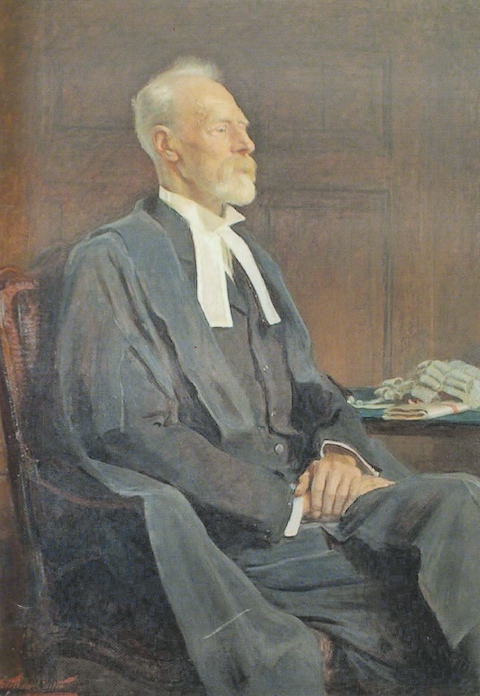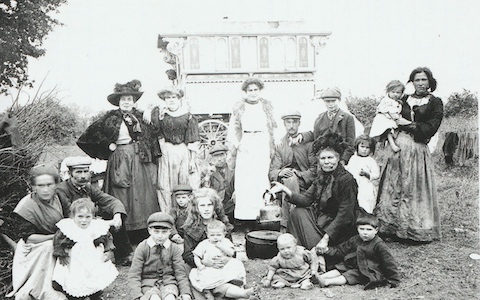 Abraham Lincoln
If given the truth, the people can be depended upon to meet any national crisis...
Abraham Lincoln
If given the truth, the people can be depended upon to meet any national crisis...
 Guildford news...
for Guildford people, brought to you by Guildford reporters - Guildford's own news service
Guildford news...
for Guildford people, brought to you by Guildford reporters - Guildford's own news service
Hidden History Of Surrey’s Travelling People Revealed
Published on: 21 Dec, 2020
Updated on: 22 Dec, 2020
Book review by David Rose
Surrey Census of Nomads, 1913, edited by Alan Wright. Published by the Surrey Record Society, hardback £20.
Just over 100 years ago Surrey was a popular place for travelling people who were looking for seasonal work on farms, selling their wares door-to-door, or offering fairground entertainment.
But as suburbia stretched into Surrey and other counties surrounding London, the once more remote places where Gypsy-travellers, hawkers and tramps set up their camps were diminishing as the settled population moved in.
By the 1910s, Surrey’s wealthy landowners began to make moves to rid these so-called nomads from their land, citing them as being a nuisance, despite the work they did and services they provided being most useful to the local economy.
They called on Surrey Police to evict them. However, the Chief Constable, Captain Mowbray Lees Sant, responded by saying it was not the job of the police to evict these nomads unless they had committed a crime.
He told the likes of Lord Onslow of Clandon Park and Sir Reginald Bray of Shere that if they wished to remove travellers it was a job for their own bailiffs.
The Chief Constable was a voice of reason. He warned against general persecution of so-called nomads, saying they differed widely as to their class, trades, respectability, and so on.
The complaining landowners stepped up their campaign with proposals to the government to regulate Gypsy encampments by a Moveable Dwellings Bill. Surrey County Council had been drawn into the arguments, and as an education authority was failing miserably, in the wake of the 1908 Children Act, in getting children of travelling people to attend school.
It was being claimed there were 10,000 nomads in Surrey – far too many for the wealthy landowners’ liking. Therefore, Surrey County Council authorised a survey in an attempt to find out as accurate as possible a figure and who these people were.
The new book, Surrey Census of Nomads, 1913, edited by Alan Wright, continues this fascinating story of Gypsy-travellers in Surrey at the turn of the 20th century, following on from his absorbing book Their Day Has Passed, published in 2017, that I reviewed here in 2018.
The new book takes an in-depth look at the two censuses of nomads undertaken on June 22 and August 31, 1913. Police officers from Surrey Constabulary and the Metropolitan Police undertook both counts with the addition of officers from the Guildford and Reigate Borough Police Forces for the second count.
The original census forms are held at the Surrey History Centre in Woking, along with many other documents and files that have formed the basis for Alan Wright’s ground-breaking research.
To local historians and writers like myself and Geoff Burch (whose mother was born into a large Gypsy family in Old Woking a few years after these surveys) this information is gold dust!

Thomas Weeding Weeding (yes that was his name!) was chief clerk to Surrey County Council and the principal organiser of the nomad censuses. Picture from the book Surrey Census of Nomads, 1919, courtesy of Surrey County Council.
The book details the lead up to the 1913 census and the movements by the rich of Surrey to rid the county of those they obviously despised – poor people for whom a travelling lifestyle was part of their culture, including showmen, hawkers, fruit pickers, charcoal burners, general labourers and tramps.
The full details of the two censuses are contained in the book. However, unlike the UK’s 10-year census, the 1913 nomad censuses did not record names of the people the police officers found as they searched their local beat for those of no fixed abode. But the exact locations, type of dwelling, occupations given and whether male, female, and the age range of any children and whether in elementary education, was recorded.
I am finding it fascinating to read of places in the census known to me and to see details of who was there in and around the summer and autumn 107 years ago.

Fruit pickers at Send in 1910. From the book Surrey Census of Nomads, 1913, courtesy of The University of Liverpool Library.
In the area around Ripley and Send noted on the census taken on June 22, recorded as being on private ground there were 16 Gipsies [the spelling used at the time] as fruit pickers living in vans, 20 in tents and three in huts. They were likely to have been working on one of the farms there, perhaps Boorman’s fruit farm?
Taking Worplesdon for example, on the census taken on August 31, there was a man and a women in a tent on Wood Street Common, who gave their occupation as hop pickers. They had three children who were in elementary education in West Molesey. Who were they? My speculation is perhaps they were making their way on foot from West Molesey towards the Farnham or Alton areas for that season’s hop picking.
At Rydes Hill Brickyard (I think it would have been the one in Keens Lane) there was one male brickmaker recorded as sleeping in its ‘Engine Room’. And at a location given as Pond Field, Whitmoor Common, a labourer was sleeping in a pig sty!
The book states that both the June and August counts were comprehensive in terms of geographical coverage. However, it was likely that not all of those who were leading a nomadic way of life were recorded. I was hoping there would be plenty of details of the Gypsy community living in the Hurtwood, a rather remote place between Shere and Ewhurst. Click here for previous story Clues To Surrey’s First School For Gypsies Deep In The Hurtwood.
Perhaps the police constable(s) tasked with recording did not venture deep enough into the woods in those parts to find them, as only a few were recorded. For example four Gypsies in two tents on Pitch Hill Common.

A Gypsy camp in the Hurtwood in the 1890s-1900s, from the book Surrey Census of Nomads, 1913, copyright of the Surrey History Centre.
I also wonder whether those vagrants who would have normally bedded down in the open-air on the night of the August 31 count had instead made their way to a local workhouse and entered its casual ward, or Spike, as the weather recorded on that day was wet.
Alan Wright states: “The outcome of the census would have disappointed those who looked to support a case that the county was affected by disproportionally high numbers of Gypsies and other nomads. The total number of nomads identified in June was 1,672 falling to 1,424 in August. Both figures were broadly consistent with the 1911 national census total of 1,463,” and “fall well below the 10,000 commonly reported by the press and other observers”.
Alan Wright must be congratulated on a fine piece of work. He has been a volunteer at Surrey History Centre for several years.
The book can be ordered from the Secretary, Surrey Record Society, Surrey History Centre, 130 Goldsworth Road, Woking, Surrey, GU21 6ND (email: mpage@surreycc.gov.uk).
It is free to subscribing members of the society (for membership see https://www.surreycc.gov.uk/culture-and-leisure/history-centre/record-society); for non-members the price is £20 (plus £2.50 postage and packing) available from the Surrey History Centre online shop https://www.surreyarchives.org.uk/product/surrey-record-society-vol-xlvii-surrey-census-of-nomads-edited-by-alan-wright-2020/.
Surrey Record Society, founded in 1913, publishes records relating to the history of the county so as to make them more accessible to researchers.
Responses to Hidden History Of Surrey’s Travelling People Revealed
Leave a Comment Cancel replyPlease see our comments policy. All comments are moderated and may take time to appear. Full names, or at least initial and surname, must be given.
Recent Articles
- Letter: What Is the Point of Calling 111 if Hospitals Ignore It’s Direction
- City Content with away Point at Camberley
- Highways Bulletin for January 27
- Ramblers’ Life President Celebrates 90th Birthday
- Mayor’s Diary: January 26 – February 8
- Stage Dragon: The Woman in White – Electric Theatre
- Letter: How Does One Influence the Decisions on Clandon House Resoration?
- Dragon Interview: Directors Named in HRA Report Were “Phenomenal” Says R4GV Leader
- Letter: Councillors Should Reject the Clandon House Proposal
- Letter: The People of Guildford Have Been Let Down


Recent Comments
- M Durant on Guildford’s New Car Park Charges Include ‘A Very Reasonable Increase’
- Roger Carnegie on Guildford’s New Car Park Charges Include ‘A Very Reasonable Increase’
- Nigel Keane on Opinion: We Should Restore Clandon House
- Niels Laub on Letter: How Does One Influence the Decisions on Clandon House Resoration?
- Maddie Evans on Opinion: Don’t Blame Greta Thunberg, We All Have To Choose On Climate Change
- Siobhan Sizmur on The Clandon Dragon – Exposed Once More
Search in Site
Media Gallery
Dragon Interview: Local Artist Leaves Her Mark At One of England’s Most Historic Buildings
January 21, 2023 / No Comment / Read MoreDragon Interview: Lib Dem Planning Chair: ‘Current Policy Doesn’t Work for Local People’
January 19, 2023 / No Comment / Read MoreA3 Tunnel in Guildford ‘Necessary’ for New Homes, Says Guildford’s MP
January 10, 2023 / No Comment / Read More‘Madness’ for London Road Scheme to Go Ahead Against ‘Huge Opposition’, Says SCC Leader
January 6, 2023 / No Comment / Read MoreCouncillor’s Son Starts Campaign for More Consultation on North Street Plan
December 30, 2022 / No Comment / Read MoreCounty Council Climbs Down Over London Road Works – Further ‘Engagement’ Period Announced
December 14, 2022 / No Comment / Read MoreDragon Interview: GBC Reaction to the Government’s Expected Decision to Relax Housing Targets
December 7, 2022 / No Comment / Read MoreHow Can Our Town Centre Businesses Recover? Watch the Shop Front Debate
May 18, 2020 / No Comment / Read More










John Lomas
December 21, 2020 at 6:40 pm
There was another brickyard at Rydes Hill.
The marker on this old map is midway between them, Keens Lane to the west of north and Rydes Hill just to the east of south.
https://www.old-maps.co.uk/#/Map/497703/152064/12/101151
David Rose replies: You are correct, there were in fact a number of brick makers in the area. The Kelly’s Directory of Surrey for 1867 lists W. Wells, Rydes Hill (He, William Wells, made the bricks for Stoughton Barracks). The 1882 Kelly’s lists George Lowe at Rydes Hill.
A large part of today’s Chitty’s Common is in a kind of bowl – dug over a number of years for the clay to make bricks, possibly by a succession of firms.
The Rydes Hill Brick Company is listed in Kelly’s Directories for the years 1905, 1907, 1911 and 1913, after which I suspect brick making ceased there as it is not listed thereafter. I strongly believe it was the brickworks at the Keens Lane end.
It may have gone out of business by the time of the nomads censuses and the man found ‘living’ in the ‘engine room’ may have been squatting there – but I guess we’ll never know.